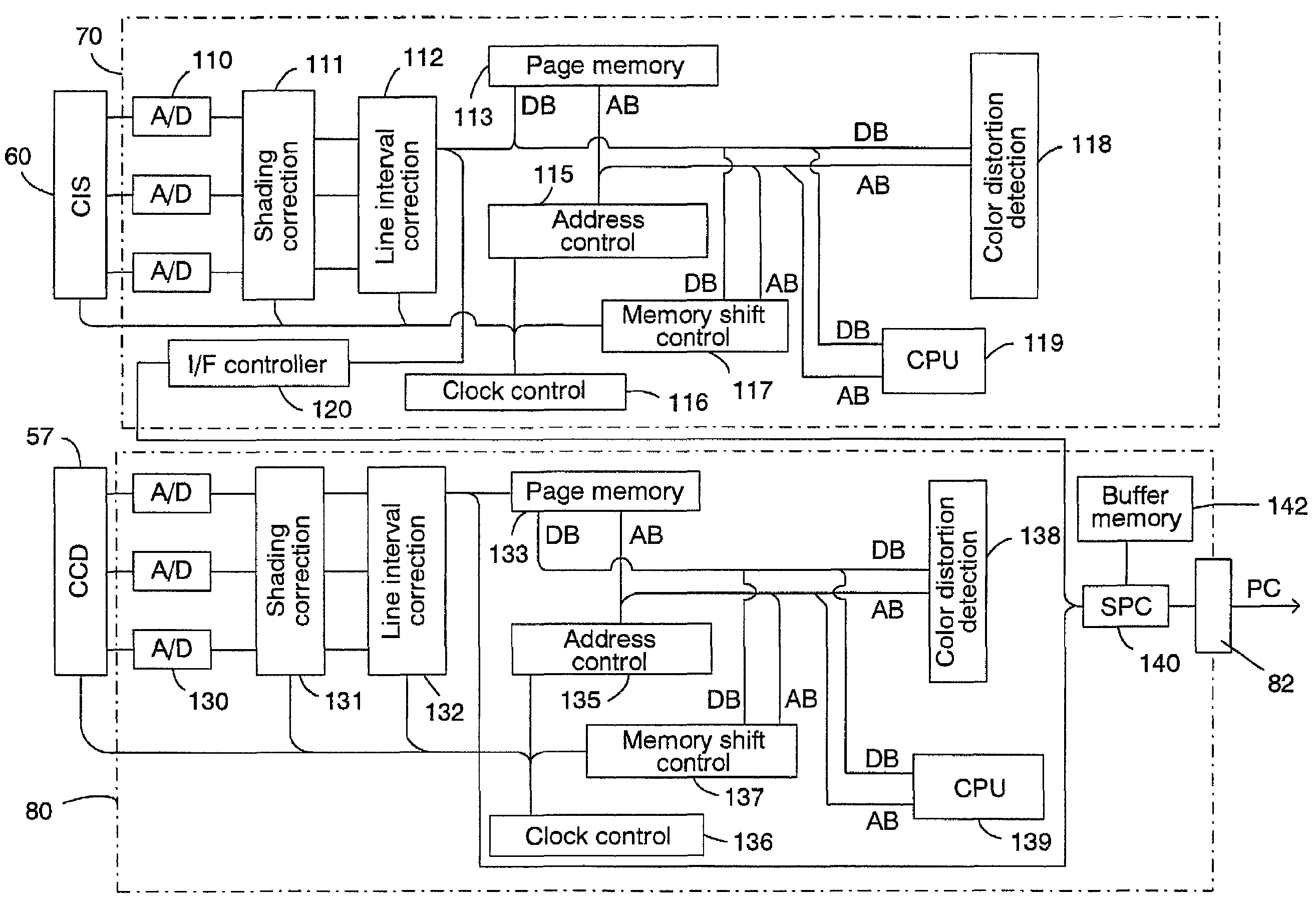Image determination apparatus and image determination method
- Summary
- Abstract
- Description
- Claims
- Application Information
AI Technical Summary
Benefits of technology
Problems solved by technology
Method used
Image
Examples
fifth embodiment
[0053]A method will be described that detects color distortion by calculating pixel coloring and negative pixel coloring and then specifying a region as a fifth embodiment that corresponds as a method in the embodiment of a first determination apparatus. An outline of the method that uses this color value is as follows.
[0054]Color distortions are noticeable when at least one color of a brightness value within RGB differs greatly from two other colors of a brightness value. Since the noticeable area is monochrome, the monochrome area is the target. The color distortion occurs in the direction of the paper feed and the influence of one error spreads to a number of pixels.
[0055]In other words, a large amount of color saturation occurs in border regions where the contrast within the monochrome regions changes greatly for pixels visible as color distortions when viewed by the human eye. Further, the determination of whether there is an original color image or a large amount of color satu...
sixth embodiment
[0072]An example using the CIE L*a*b* method will be described as the sixth embodiment as a method that corresponds to an embodiment of a second determination apparatus.
[0073]In this method color distortion is noticeable in monochrome areas of images. The color distortion is also noticeable in high contrast areas (edge areas) in images.
[0074]FIG. 6 shows an image read into a color scanner divided up depending on properties. The figure is a conceptual diagram showing image data distributed in two dimensions divided up into regions of each property. The figure is an enlarged view divided into color areas and monochrome areas.
[0075]Areas with high contrast (edge areas) exist in any of these. Areas with reading errors exist in the same manner but areas with conspicuous color distortion are in the slanted line area of FIG. 6.
[0076]In this method, generally, this slanted line area is detected in step (1) separation of color and monochrome, step (2) edge detection and step (3) color distor...
seventh embodiment
[0099]Next, the seventh embodiment corresponding to the method in the third determination apparatus will be described. This embodiment makes it possible to detect color distortion even if correlations are calculated within three primary colors.
[0100]In a correlation method, the next characteristic is focused on, and color distortion is detected. The target image, however, is limited to monochrome images. Consequently, the color and monochrome are separated in advance using the method already described, and the method described below will become applicable in regions where monochrome is recognized.
[0101]If, however, indications, such as a monochrome document, are given beforehand, the method can be applied even if the above-mentioned separation is not performed.
[0102]This method is realized on the assumption of the following properties.[0103](1) Color distortion is noticeable in high contrast areas in an image.[0104](2) Color distortion has different RGB brightness values.[0105](3) W...
PUM
 Login to View More
Login to View More Abstract
Description
Claims
Application Information
 Login to View More
Login to View More - R&D
- Intellectual Property
- Life Sciences
- Materials
- Tech Scout
- Unparalleled Data Quality
- Higher Quality Content
- 60% Fewer Hallucinations
Browse by: Latest US Patents, China's latest patents, Technical Efficacy Thesaurus, Application Domain, Technology Topic, Popular Technical Reports.
© 2025 PatSnap. All rights reserved.Legal|Privacy policy|Modern Slavery Act Transparency Statement|Sitemap|About US| Contact US: help@patsnap.com



